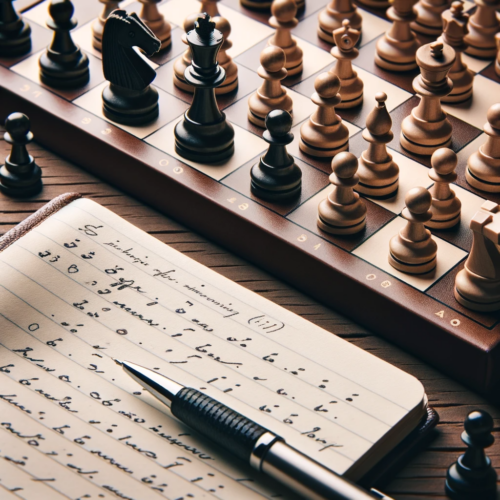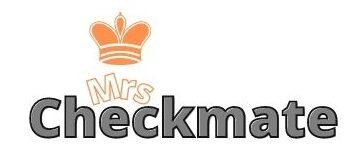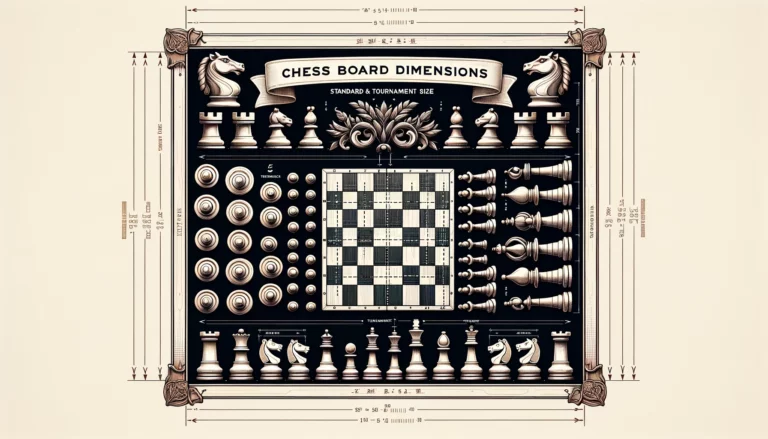The Importance of Chess Notation and How to Learn It
Unlock the secrets of chess mastery with our comprehensive guide on ‘The Importance of Chess Notation and How to Learn It.’ Chess notation isn’t just a method to record games; it’s a crucial tool that enhances understanding, strategic planning, and post-game analysis.
Whether you’re a budding enthusiast or an experienced player, learning chess notation is vital for improving your game. Dive into our insightful exploration to grasp the intricacies of this essential skill and discover how mastering chess notation can elevate your overall chess experience.
Key Takeaways
| Topic | Description |
|---|---|
| What is Chess Notation? | A system for recording and communicating chess moves. |
| Why It’s Important | Crucial for studying, analyzing, and improving your game. |
| Learning Chess Notation | Involves understanding the names of pieces and squares, as well as how to write moves. |
| Practice Makes Perfect | Consistent practice is key to mastering chess notation. |
| Resources for Learning | Books, websites, and apps are available to help you learn and practice chess notation. |
What is Chess Notation?
Chess notation is the language of the chess world. It’s a system of symbols and abbreviations used to record and communicate chess moves. The most common form of chess notation is algebraic notation, which has become the standard for chess literature and online platforms.
Types of Chess Notation
- Algebraic Notation: The most commonly used form. E.g., “Nf3” for moving a knight to the square f3.
- Descriptive Notation: An older form, less commonly used today. E.g., “P-K4” for moving a pawn to the king’s 4th square.
- Computer Notation: Used by chess software. E.g., “e2e4” for moving a pawn from e2 to e4.
| Type | Example Move | Description |
|---|---|---|
| Algebraic Notation | Nf3 | Knight to square f3 |
| Descriptive Notation | P-K4 | Pawn to King’s 4th square |
| Computer Notation | e2e4 | Pawn from e2 to e4 |
The Importance of Chess Notation
Chess notation is not just a bunch of letters and numbers; it’s a crucial tool for any serious chess player. Here’s why:
Why Chess Notation Matters
- Record Keeping: It allows you to record your games for future analysis. This is essential for identifying mistakes and improving your strategies.
- Communication: It’s the universal language for discussing games, openings, and strategies with other players or coaches.
- Study Material: Notation is used in chess books, articles, and tutorials. Knowing it is essential for studying and improving your game.
- Software Analysis: Modern chess software uses notation for game analysis, helping you understand your strengths and weaknesses.
For a deeper dive into the importance of each chess piece, check out what chess pieces represent.
How to Learn Chess Notation
Learning chess notation is like learning the ABCs of chess. It’s simple, straightforward, and opens the door to a world of knowledge.
Names of the Pieces
- King (K)
- Queen (Q)
- Rook (R)
- Bishop (B)
- Knight (N)
- Pawn (no symbol)
For more on the pieces and their roles, visit how many pieces are there in a chess set.
Names of the Squares
The chessboard is an 8×8 grid, and each square is identified by a unique combination of a letter (a-h) and a number (1-8), ranging from “a1” at the bottom left to “h8” at the top right. For more on this, check out what size chess board do I need.
Writing Moves in Algebraic Notation
- Piece + Destination: E.g., “Nf3” (Knight to f3)
- Capture: “x” is used to indicate captures, E.g., “exd5” (pawn captures on d5)
For more examples and practice, read basic chess rules.
Practice Reading and Writing Chess Notation
The best way to get comfortable with chess notation is to practice, practice, practice.
Tips for Practicing
- Analyze Your Games: Record your moves during a game and analyze them later.
- Read Chess Books: Familiarize yourself with the notation used in chess literature.
- Use Chess Software: Platforms like Chess.com or Lichess.org offer features to practice notation.

Resources for Learning Chess Notation
There’s a wealth of resources out there to help you master chess notation.
Books
- “Chess for Dummies” by James Eade and Larry Evans
- “The Complete Book of Chess Strategy” by Fred Reinfeld
- “My System” by Aron Nimzowitsch
Websites
Apps
- Chess Notation Trainer
- ChessBase
- ChessKid
In conclusion, chess notation is the backbone of any serious study and discussion of the game. It’s not just a way to record moves; it’s a tool for improvement, a medium for communication, and a key to the vast world of chess knowledge. So grab a board, pick up a book, or download an app and start practicing today!






